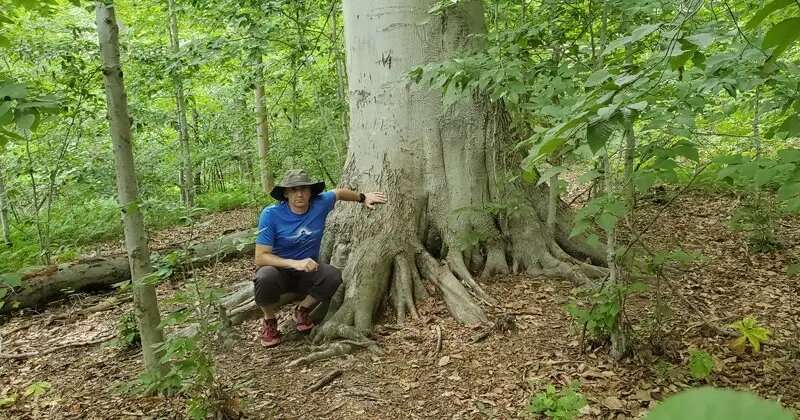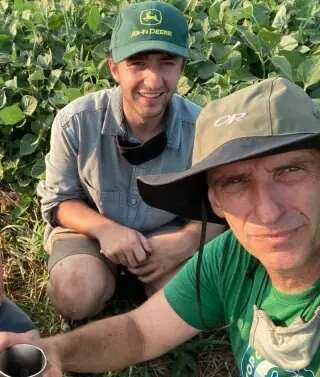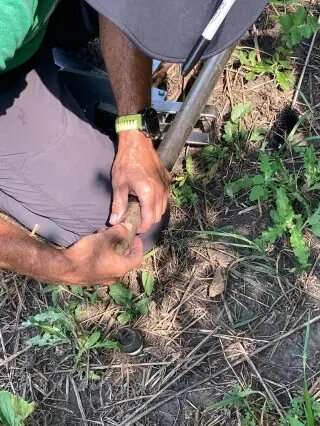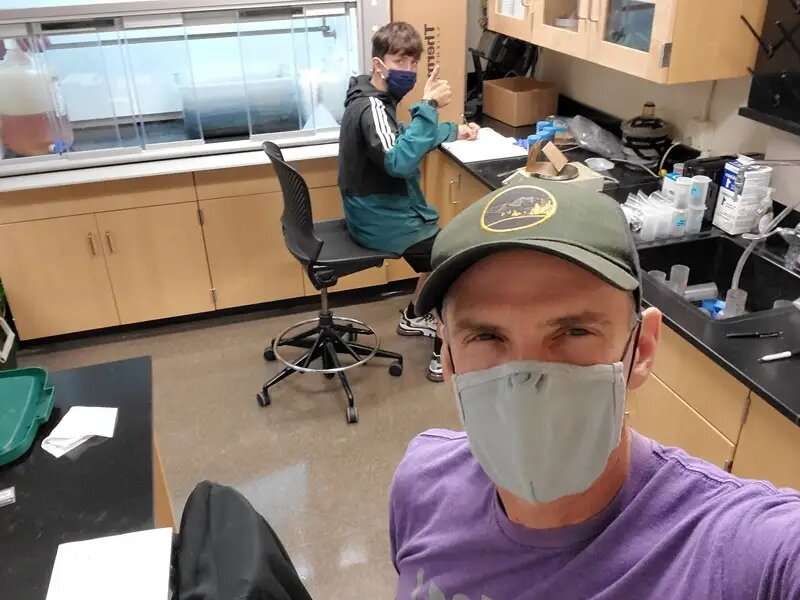Ability of urban trees, soils to maintain critical ecosystem services

If you're a tree, country life is much easier than city living. Rural trees—which can live long, productive lives of sometimes more than 100 years—draw on vast resources of an extensive forest network of nearby trees. In urban areas, friendly, neighboring trees can be few and far between. Heat island effects and variation in nutrient levels leave urban trees more vulnerable to natural environmental pressures. The consequences are depressed growth and an early death.
But underneath the tree lies an ally—soil, which provides the tree a welcome anchor for its roots, nutrients for growth and a vast array of soil microbes. In return, trees modify the soil microbial community (SMC), establishing and nourishing crucial bacterial and fungal life below the surface.
In a research article published in Scientific Reports, University of Delaware researchers investigated the pressures of urbanization on SMC associated with specific tree species. The research team included UD faculty member Tara Trammell and former postdoctoral research fellow Carl Rosier.
The research team compared urban, suburban and rural areas. They selected American beech and yellow poplar trees due to canopy and bark differences, but also because of their dominance in both urban and rural forests.
To characterize the soil microbes beneath specific trees, Trammell and Rosier used next generation high throughput sequencing. This technique enabled the researchers to simultaneously sequence millions of DNA molecules allowing specific identification of hundreds of bacterial species. In tandem with this approach, the research team also investigated soil carbon, nitrogen, metal concentrations and pH that comprise the soil under each tree species across all sampled forests. The team's findings suggest urban pressure alters specific soil characteristics, overriding the tree's capacity to maintain a unique SMC.

In rural forests, the researchers found SMC dissimilarity, suggesting that microbes are unique to each tree species. However, city life means greater urbanization pressure, so whether the tree is a beech or poplar, SMC is similar. Rosier said similarity is not the result of biodiversity loss, but rather due to greater overlap of shared organisms.
"We thought that we would lose some of the more sensitive microorganism species within urban environments, but we didn't see that," said Rosier. "The [urban] environment changes SMC to a degree where you have beech and poplar trees with similar SMC composition."
With expanding population centers, the study will inform land managers and conservation efforts on how to create more resilient urban forests. Such forestry research illuminates a battle plan for how big an urban forest must be to positively impact ecosystem services.
The tree-soil bond
Pulling carbon from the air and transferring it through their roots and leaf litter, trees are soil's best friend, replenishing soil with rich sources of organic nutrients. These selfless exploits help to create a healthy SMC, which in turn provide critical ecosystem services, including organic matter decomposition, soil structural formation and nutrient cycling.

"When we think about climate change and the ability of soil to sequester carbon, microbes are essential in that process," said Rosier, now a senior project scientist with Material Matters and lead research scientist and co-founder of Agroecology Solutions.
Without the trees to provide critical resources, the soil's composition would change, negatively altering an ecosystem. Plants develop specific communities of microbes around their roots. Sometimes living hundreds of years, trees spend their life manipulating water, nutrients and other factors like pH in the soil.
"At the base of specific species of trees, you have a unique soil chemistry; however, as little as one meter away, soil chemistry can differ significantly," said Rosier.
Soil versus city
You might expect rural and urban soil chemistry to be very different. After all, an urban forest faces a lot of human-made environmental pressures. Instead, the chemistry is similar in both locations—very robust and resilient.

In the soil versus city struggle, a casual observer might not give soil much of a chance. But despite being outnumbered by human-made elements, the underdog pulls a Rocky Balboa, fighting deep into the night.
"It shows you how robust soils are," said Rosier. "Soils can take a huge impact before losing organic matter and the ability to sustain plant life."
But once the soil crosses the tipping point where it loses important components such as organic matter, nursing it back to health is incredibly difficult.
"As land managers and stewards of the land, we must be mindful of this critical juncture," Rosier said. "The capacity of soils to perform ecosystem services is critical for humans to survive on our planet."Compost improves apple orchard sustainability
More information: Carl L. Rosier et al, Urbanization pressures alter tree rhizosphere microbiomes, Scientific Reports (2021). DOI: 10.1038/s41598-021-88839-8
Journal information: Scientific Reports
Provided by University of Delaware
No comments:
Post a Comment